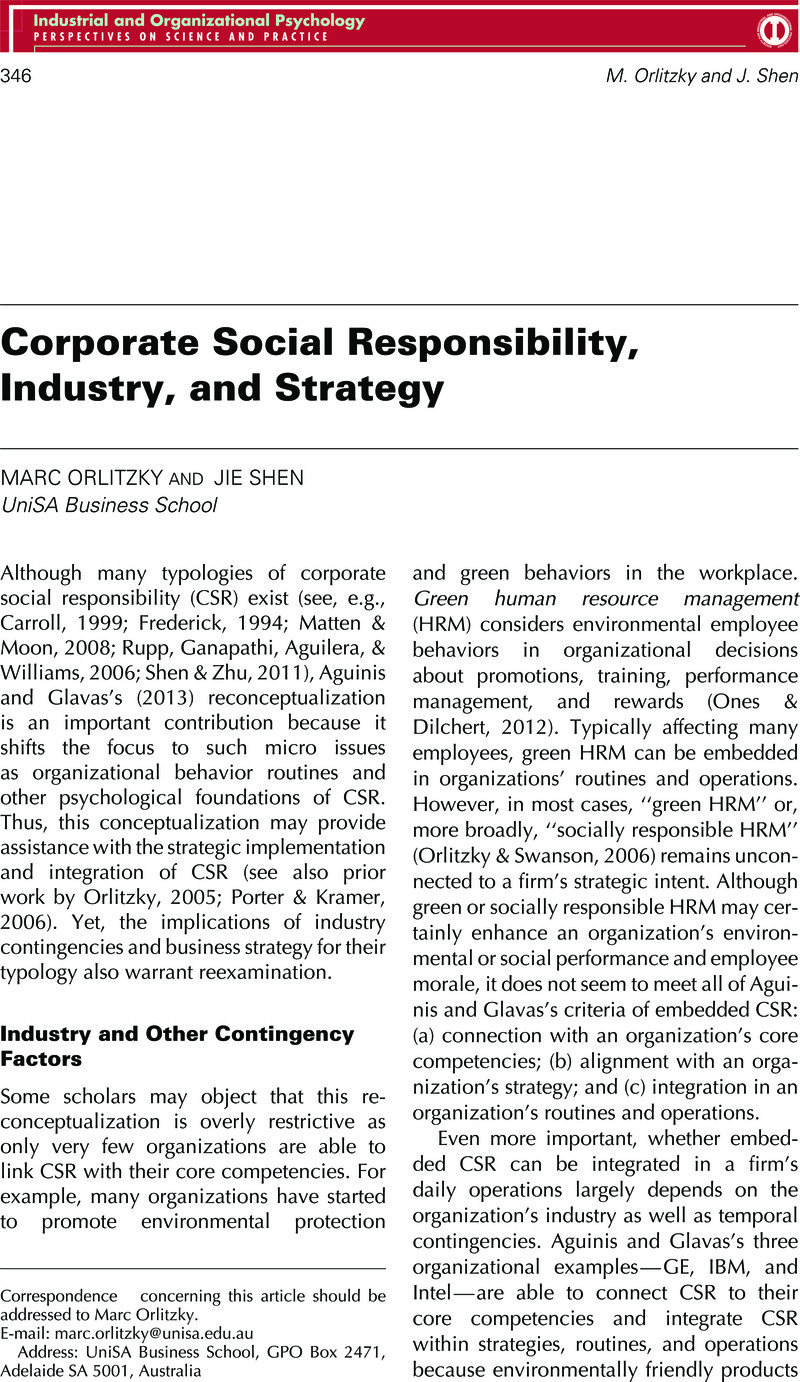Crossref Citations
This article has been cited by the following publications. This list is generated based on data provided by Crossref.
Orlitzky, Marc
2015.
The politics of corporate social responsibility or: why Milton Friedman has been right all along.
Annals in Social Responsibility,
Vol. 1,
Issue. 1,
p.
5.
Svensson, Goran
Høgevold, Nils M.
Petzer, Danie
Padin, Carmen
Ferro, Carlos
Klopper, HB
Sosa Varela, Juan Carlos
and
Wagner, Beverly
2016.
Framing stakeholder considerations and business sustainability efforts: a construct, its dimensions and items.
Journal of Business & Industrial Marketing,
Vol. 31,
Issue. 2,
p.
287.
Ferro, Carlos
Padin, Carmen
Svensson, Göran
Sosa Varela, Juan Carlos
Wagner, Beverly
and
Høgevold, Nils M.
2017.
Validating a framework of stakeholders in connection to business sustainability efforts in supply chains.
Journal of Business & Industrial Marketing,
Vol. 32,
Issue. 1,
p.
124.
Swiatkiewicz, Olgierd
2017.
Linking CSR to Strategy: A Practical View.
Foundations of Management,
Vol. 9,
Issue. 1,
p.
299.
Orlitzky, Marc
Louche, Céline
Gond, Jean-Pascal
and
Chapple, Wendy
2017.
Unpacking the Drivers of Corporate Social Performance: A Multilevel, Multistakeholder, and Multimethod Analysis.
Journal of Business Ethics,
Vol. 144,
Issue. 1,
p.
21.
Svensson, Göran
Ferro, Carlos
Hogevold, Nils
Padin, Carmen
and
Sosa Varela, Juan Carlos
2018.
Developing a theory of focal company business sustainability efforts in connection with supply chain stakeholders.
Supply Chain Management: An International Journal,
Vol. 23,
Issue. 1,
p.
16.
Guenther, Edeltraud
Busch, Timo
Endrikat, Jan
Guenther, Thomas
and
Orlitzky, Marc
2018.
Corporate Social Responsibility.
p.
325.
Isaac, Rami K.
and
Eftychiou, Evi
2019.
Editorial.
International Journal of Tourism Cities,
Vol. 5,
Issue. 2,
p.
125.
Fu, Limin
Boehe, Dirk
Orlitzky, Marc
and
Swanson, Diane L.
2019.
Managing stakeholder pressures: Toward a typology of corporate social performance profiles.
Long Range Planning,
Vol. 52,
Issue. 6,
p.
101847.
Lin, Woon Leong
Law, Siong Hook
and
Azman‐Saini, W. N. W.
2020.
Market differentiation threshold and the relationship between corporate social responsibility and corporate financial performance.
Corporate Social Responsibility and Environmental Management,
Vol. 27,
Issue. 3,
p.
1279.
Chen, Jing
Zhang, Zhe
and
Jia, Ming
2021.
How CEO narcissism affects corporate social responsibility choice?.
Asia Pacific Journal of Management,
Vol. 38,
Issue. 3,
p.
897.
Perera, Chamila R.
and
Hewege, Chandana R.
2022.
Internalising and internationalising country specific CSR practices of a Japanese multinational company.
critical perspectives on international business,
Vol. 18,
Issue. 2,
p.
201.
Al-Shammari, Marwan A.
Banerjee, Soumendra Nath
and
Rasheed, Abdul A.
2022.
Corporate social responsibility and firm performance: a theory of dual responsibility.
Management Decision,
Vol. 60,
Issue. 6,
p.
1513.
Sang, Meiyue
Zhang, Yuqing
Ye, Kunhui
and
Jiang, Weiyan
2022.
Moderating Effects of Internationalization between Corporate Social Responsibility and Financial Performance: The Case of Construction Firms.
Buildings,
Vol. 12,
Issue. 2,
p.
185.
Al-Shammari, Marwan A.
Banerjee, Soumendra Nath
Al-Shammari, Hussam
and
Doty, Harold
2023.
The interplay of CEO ability and governance robustness on the performance effects of corporate social responsibility.
Management Decision,
Vol. 61,
Issue. 7,
p.
1932.
Al-Shammari, Marwan Ahmad
Banerjee, Soumendra
Shah, Tushar R.
Doty, Harold
and
Al-Shammari, Hussam
2023.
The value of expertise: how chief executive officer and board corporate social responsibility expertise enhance the financial effects of firms’ corporate social responsibility initiatives.
Society and Business Review,
Vol. 18,
Issue. 1,
p.
1.
Li, Qian
and
Wang, Jianan
2024.
Anchoring effect in corporate social behaviors: evidence from donations and pollution.
Management Decision,
Vol. 62,
Issue. 11,
p.
3495.
Kazemi, Ali
Ghasempour Ganji, Seyedeh Fatemeh
and
Na'ami, Abdullah
2024.
Innovation capabilities, innovation strategies and export performance: the moderating impact of corporate social responsibility.
Social Responsibility Journal,
Vol. 20,
Issue. 2,
p.
363.



